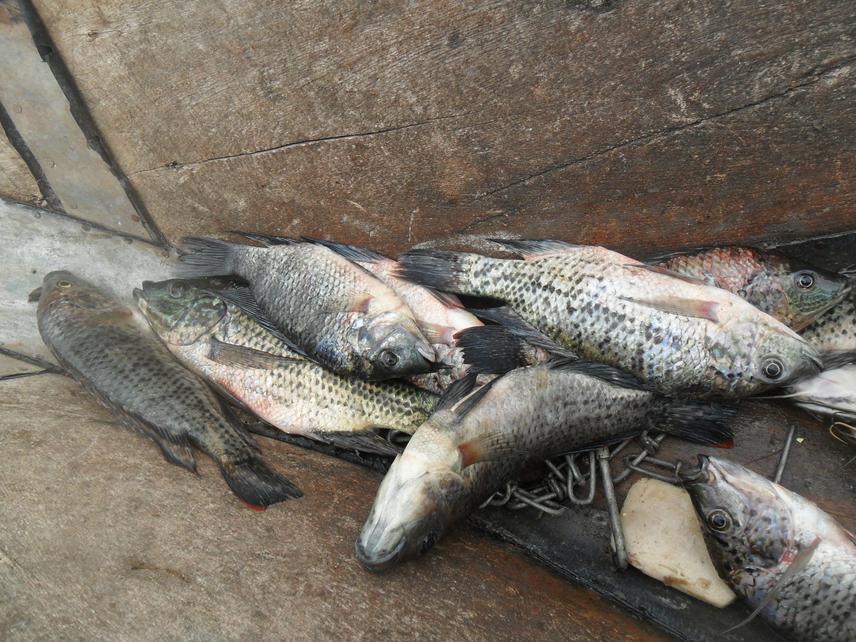Johnson Grayson Mshana
Other projects
2 Jan 2013
Conservation Awareness Campaign for the Protection of Critically Endangered Jipe tilapia, Oreochromis jipe and its Habitat in Lake Jipe
12 Apr 2016
Community Participation in the Conservation of Critically Endangered Jipe Tilapia Oreochromis jipe and Lake Jipe Ecosystem in Tanzania
8 Nov 2017
Helping Jipe Communities to Protect Critically Endangered Jipe Tilapia Oreochromis jipe and Ecosystem in Lake Jipe Tanzania
Conservation of Jipe tilapia and its habitat through tree planting, awareness campaign, and best land use practices and education toward improvement of environmentally friendly alternative livelihood activities.

Large size (15-17 cm total length) Jipe Tilapia from the fishermen catches in November 2015.
Lake Jipe is a small, shallow lake (area 28 sq. km and average depth less than 3 m), lying astride the Kenya-Tanzania border, just to the east of the northern Pare Mountains of Tanzania (Mwanga district, in the Kilimanjaro region). The Lake receives its main inflow from Mt Kilimanjaro in Tanzania via River Lumi passing through Kenya. The other main inflow is via River Muvulani from the Pare Mountains. Several temporary streams, mainly from the Pare Mountains, also drain into the Lake. The lake has one outflow, the River Ruvu, located in Tanzania to the south of River Lumi, the main inflow. Lake Jipe centres an ecosystem rich in biodiversity, with endemic fish species and birds’ species. The value of this biodiversity has several components: its direct contribution to economic productivity (e.g. fisheries); its ‘insurance’ value in light of unexpected events; its value as a storehouse of genetic information; and its value in supporting the provision of ecosystem services (e.g. cleaning water). Lake Jipe is known for its endemic but critically endangered Jipe tilapia (Oreochromis jipe), introduced Oreochromis esculentus, Clarias gariepinus and Rastraneobolla argentea. Recent survey by Johnson et al. (2013) reported that fishing contributed 80% of the income of local communities in the past three decades. However decline in catch and abundance of fish in the lake due to various natural and anthropogenic factors affected the livelihood such that fishing contributes only 40% of the resident’s income.
Lake Jipe is suffering from environmental threats such as diversion of water for multiple uses, siltation and over-fishing, unsustainable land use practices in the catchments and illegal fishing practices (Bwathondi and Ngatunga 2001). Anthropogenic factors affected not only fish breeding and nursery grounds for fish but also the quality of water. As a result, the fishery of Lake Jipe declined tremendously leading to the inclusion of Jipe tilapia in the IUCN Red List as Critically Endangered Species (IUCN 2006). Decline in the fishery has unconstructively affected the livelihood of local communities such that several fishermen started to practice farming, beekeeping, and livestock keeping while others turned into charcoal dealers as alternative source of income. Unsustainable agriculture, livestock keeping and charcoal business increased soil erosion and subsequently nutrient enrichment and siltation. Past conservation efforts (i.e. awareness to the residents/students) only discouraged people from activities that were degrading the environment. However, involvement of resident/students in tree planting in degraded areas, awareness to the people on the best land use practices and improvement of environmental friendly income generating activities (e.g. beekeeping and local chicken keeping) are the key to the conservation of Jipe tilapia and its habitat.